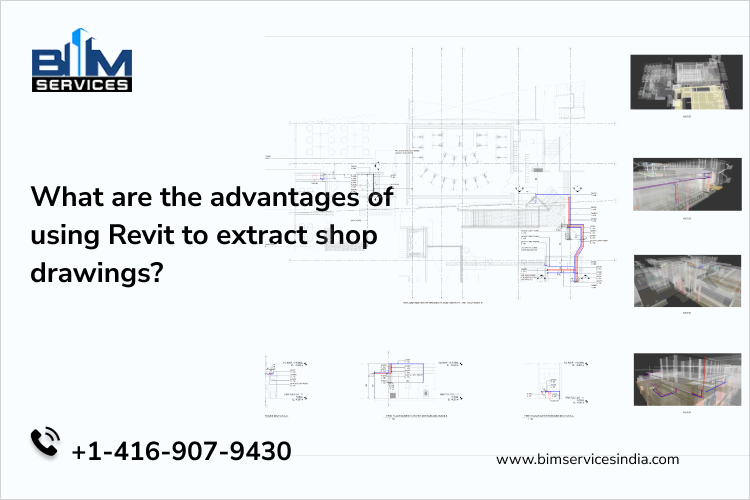What are the advantages of using Revit to extract shop drawings?

Shop Drawings refers to a drawing or a set of drawing that is created by the contractor, sub-contractor, consultant, manufacturer or fabricator. They provide all the details like dimensions, material specifications, fabrication standards, installation and erection information etc. that are necessary to prefabricate, assemble and install the components of the buildings.
Precise and detailed shop drawings ensure that there is a clear communication between the architect, engineer and the fabricator. It moreover leads to a streamlined fabrication process wherein there are no errors and ensures that all the parts fit as required. Shop Drawings guarantee that the architectural, structural and MEP components that are prefabricated abide by all safety, quality and project standards.
Table of Contents
A lot of information and expertise is required in order to create shop drawings. Today, the AEC professionals find themselves with an advantage when it comes to creating accurate shop drawings which is in the form of Building Information Modeling. Using BIM, more specifically Revit can help the AEC professionals in increasing accuracy, productivity and reducing errors when it comes to creating shop drawings. In the current article we look at the four main advantages:
Extensive Building Component Library:
Revit offers an existing and in-built library of parametric building design components known as Revit families. Revit Family Creation Services provide a lot of value for drafters and go a long way in making their job easier. System families are pre-defined families containing elements used to create basic components. Their graphical and parametric representation exists in the Revit software. Similarly, loadable families are created and imported into Revit projects and their graphical representation can be defined from scratch. Irrespective of whether its system or loadable families they are either already existing or can be customized or once designed they can be saved in the repository to be used as and when required. This saves a lot of time and resources as every time they don’t need to be modelled from the starting.
Quick Modifications:
CAD has line-to-line designs while in BIM there is a focus on parameters during the designing of full 3D models. This means that any change made in CAD will require the architect, designer or the CAD drafter to make the same change in all aspects of the shop drawings. For instance, a change in one single part or the bolt will mean that all shop or fabrication drawings, assembly drawings, part drawings etc. will have to be updated. This is extremely exhaustive and can get quite time consuming. However, when it comes to making a change in BIM even a small singular change is reflected throughout the model without the AEC professional having to manually make it. Moreover, since all kinds of shop drawings are extracted from the model they don’t need to be individual updated.
Flexibility:
With Revit it is possible to export or import to large number of formats like DWG, DGN, DXF, JPEG, PDF etc. It also makes it possible to save the entire project into a single project file so that it is easier to manage. This way various stakeholders can work the same Revit model which makes it possible for them to keep a track of all the changes. It also provides the provision to merge changes made by different users at every step. It allows the stakeholders to make informed decisions and ensures that the shop drawings which are extracted are of high-quality. Flexibly and interopebility provides an added advantage when manufactures or fabricators what to see the BIM project and don’t have the software. Without Revit they can check the 3D model but not make any changes.
Increased accuracy:
As stated above precision in shop drawings is of utmost importance. If the components that are prefabricated are not of correct dimensions then it could cause them to not fit properly onsite. Any errors would lead to a loss of time, money and resources which can cause the project to go over budget. However, the BIM model ensures that any clashes that could be caused are detected in the planning and designing stage. Moreover, the shop drawings extracted from BIM provide all details like material specifications, manufacturers instruction etc. it ensures accurate prefabrication. This also translates in augmented speed and efficiency onsite.
Thus, using Revit Modeling Services provides the construction professionals with various advantages which leads to an increase in their productivity, accuracy and ultimately cost. Utilizing Revit to extract shop drawings could provide them with a competitive advantage needed to get ahead.